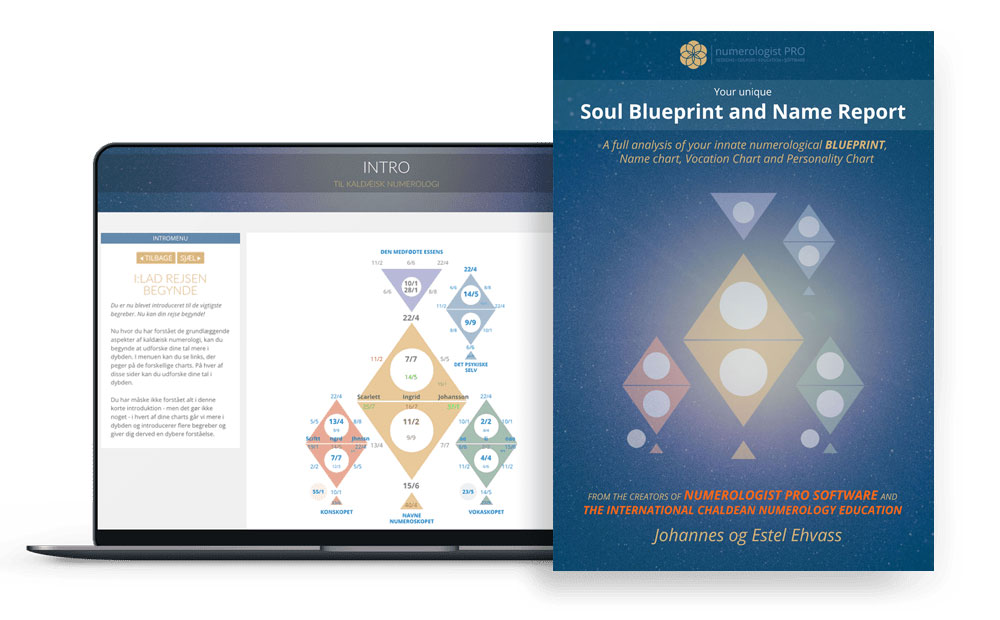Babylonian and Chaldean Astrology

Johannes Ehvass
Welcome, dear reader! Together, we embark on a captivating journey into astrology, a timeless art and science that has accompanied humanity since its earliest days. Each astrological discovery not only mirrors the era and culture it emerged from but also feels like a celestial gift, as if the universe is directly speaking to us. Through these articles, I share with you the profound journey of how astrology has grown and evolved alongside us. Let's explore this cosmic connection that has, for millennia, enriched our understanding of ourselves and the universe around us.
Horoscopic Astrology’s Birth in Babylon: The Genesis of the Zodiac, the Horoscope, and Beyond

The vibrant scene of ancient astrology finds some of its most intricate and influential threads woven during the epoch of Babylonian and Chaldean civilizations. These epochs, spanning a significant portion of the first millennium BCE, witnessed a transformation in the way human beings interpreted and harnessed celestial knowledge. The emergence of horoscopic astrology in Babylon stands as a revolutionary juncture in this narrative, marking a departure from omen-based interpretations towards more individualized and systematic practices.
The Landscape of Early Mesopotamian Astrology
Before delving into the nuances of horoscopic astrology, it’s imperative to understand the canvas upon which it was painted. Early Mesopotamian cultures, notably the Sumerians and Akkadians, heavily relied on omen-based astrology. The celestial phenomena, be it an eclipse or a planetary conjunction, were viewed as signs foretelling societal events. However, as Babylonian influence grew, so did the depth and precision of astrological practices.
The Birth of the Zodiac
One of the most foundational elements introduced during the Babylonian era was the zodiac. A belt of the heavens divided into twelve equal parts, the zodiac became the backdrop against which the sun, moon, and planets moved. Each segment, or ‘sign’, corresponded to a specific constellation, giving birth to the twelve zodiacal signs familiar to many today: Aries, Taurus, Gemini, and so forth. This division provided a systematic framework for astrologers to track and predict planetary movements, setting the stage for horoscopic practices.
Emergence of the Horoscope
The term ‘horoscope’ finds its roots in the Greek word ‘horoskopos’, meaning ‘observer of the hour’. In its nascent form in Babylon, the horoscope was a birth chart, plotting the positions of celestial bodies at the exact moment of an individual’s birth. This was a revolutionary concept. Instead of focusing solely on broad societal omens, astrologers now had the tools to provide individualized readings based on the unique celestial alignment at one’s birth.
Central to this practice was the Ascendant or the Rising Sign – the zodiacal sign rising on the eastern horizon at the time of birth. This, coupled with the positions of the Moon, Sun, and planets across the twelve zodiac signs and houses, formed the bedrock of a natal chart. By interpreting these positions and their aspects (angular relationships) to one another, astrologers could offer insights into an individual’s personality, fate, and life challenges.
Key Components and Systematization
Babylonian Astrology:
Babylonian astrology, which developed in Mesopotamia around the 2nd millennium BCE, laid the groundwork for many concepts in astrology. Babylonians were some of the first to systematically observe and document the movements of celestial bodies. They developed the zodiac, a band of the sky divided into sections named after constellations, and assigned meanings to planetary positions.
Houses:
While the Babylonians did consider divisions of the sky and celestial phenomena related to various aspects of life, the specific system of twelve astrological houses as we understand it today was likely developed later during the Hellenistic period.
Aspects:
Similarly, while the Babylonians did observe angular relationships between planets, the formalization of the concept of aspects (conjunction, sextile, square, trine, opposition) was more systematically developed by later Hellenistic astrologers.
Planetary Dignities:
The Babylonians made significant contributions to the concept of planetary dignities. They observed that certain planets seemed to have stronger or weaker influences in different parts of the zodiac. However, the detailed system of dignities, exaltations, detriments, and falls were more fully fleshed out by the Hellenistic astrologers.
In summary, while the foundations for these concepts can indeed be traced back to Babylonian astrology, their full development and systematization, as we know them today, occurred during the Hellenistic period when Greek, Egyptian, and Mesopotamian knowledge converged.
Celestial Scribes: Tracing the Legacy of Babylonian Astrologers and Their Astronomical Contributions

While there were undoubtedly many skilled astronomers and astrologers during the period of Babylonian astrology, records from that time often do not attribute specific discoveries or works to individual names as is common in later historical periods.
The Babylonians used cuneiform script on clay tablets to record their observations and predictions, but these were usually anonymous or attributed to royal patronage.
However, there are some historical figures and texts that are significant in the context of Mesopotamian astrology:
Enuma Anu Enlil
One of the most important astrological texts from ancient Mesopotamia is the “Enuma Anu Enlil.” While not attributed to a single author, this collection of clay tablets, written in cuneiform script, contains a series of omens and observations related to celestial phenomena. The text dates back to around the 1st millennium BCE and was used by Babylonian priests to interpret signs in the sky and make predictions about the future. Enuma Anu Enlil is a compilation of knowledge that was likely passed down and expanded over several centuries.
Mul.Apin
Another significant collection is the “Mul.Apin,” which is a pair of cuneiform tablets that contain astronomical data and star lists. This text, which dates from around the 7th century BCE, includes information on constellations, the movements of the Moon and planets, and other celestial phenomena. Again, the authors of the Mul.Apin are not specified, but the text is an essential source of information on early Babylonian astronomy and astrology.
Erra Pater
While not a Babylonian, Erra Pater was a Chaldean astrologer who lived in the 4th century BCE and is sometimes associated with the Babylonian tradition of astrology. His works, which include information on zodiacal signs and astrological medicine, were later translated into Latin and Greek and had an influence on European astrological traditions.
Nabu-Rimanni and Kidinnu
Two astronomers from the late Babylonian period who are known by name are Nabu-Rimanni and Kidinnu (also known as Cidenas). While not famous for astrological works per se, their contributions to astronomy laid the foundations for the astrological systems that followed. For instance, Kidinnu is credited with developing accurate lunar and solar predictive models.
While we have many records of Babylonian astrological practices, it’s important to note that attributions to individual scholars are rare, and much of what we know about Babylonian astrology comes from collective and anonymously authored works. As such, it’s difficult to provide detailed information about specific astrologers and their contributions.
Chaldean Influence and Evolution
The Chaldeans, a Semitic-speaking people who dominated Babylon in later periods, further enriched Babylonian astrological traditions. They emphasized the mystical aspects, incorporating their own religious and philosophical perspectives into the readings. Their focus on the spiritual dimensions of astrology played a significant role in shaping the esoteric branches of the practice in later cultures.
Legacy and Transmission
Babylon’s astrological innovations, particularly the horoscope, did not remain confined to its boundaries. As trade routes expanded and empires interacted, this knowledge traveled, finding eager adopters in Greece, India, and beyond. The Hellenistic period, in particular, became a melting pot, synthesizing Babylonian horoscopic practices with Greek cosmology, laying the foundation for Western astrology as we know it today.
Conclusion
The birth of horoscopic astrology in Babylon signifies a profound shift in humanity’s quest to understand the cosmos. It marked a turn from collective to personal, from general omens to individual destinies charted in the stars. By introducing the zodiac, the horoscope, and a slew of other astrological tools, the Babylonians and Chaldeans enriched the tapestry of ancient wisdom, leaving an indelible mark on astrological traditions for millennia to come.

Johannes & Estel: Renowned authorities in Numerology, Astrology, and the esoteric arts. As the founders of Scandinavia's premier Numerology school, we're delighted to share our insights through this curated series on astrology. Dive in and discover the stars.
The Worlds Most Advanced Numerology Report

Your birthdate reveals your unique life purpose, potentials, talents, weaknesses, and karma in this life.
Your names show what you attract into your life regarding your career, relationships, happiness, money, and success.
GET THE REPORT HERE
Introduction to Astrology
The history of Astrology
Moving beyond deterministic astrology
Foundation of Astrology: Planets, Signs and Houses
Astrology and the Holographic Universe
The Holographic Universe
The Human Psyche as a Mirror to The Solar System
The Human Body as a Mirror to The Star Signs
Astrology Background
Egyptian Astrology
Mayan Astrology
Chinese Astrology
Indian Astrology - Jyotish
Celtic Astrology
Tibetan Astrology
Mesopotamian Astrology
Early Mesopotamian Astrology: The Dawn of Celestial Divination
Enuma Anu Enlil: The Epicenter of Babylonian Celestial Omen Interpretation
Babylonian and Chaldean Astrology
Babylonian and Chaldean Astrology
Chaldean influence and evolution
Chaldean Wisdom: Safeguarding and Transmitting Astrological Knowledge
Hellenistic Astrology
Hellenistic Astrology background
Claudius Ptolemy and Tetrabiblos
Vettius Valens
Dorotheus of Sidon
Persian Astrology
Persian Astrology background
Sassanian Astrology
Late Antiquity and The Transition Period
Late Antiquity and The Transition Period
Hellenistic to Islamic Transition: The Torchbearers of Astrological Wisdom
Islamic Golden Age
Arabian Astrology Background
Arabian Astrology Contributions
Medieval Astrology
Introduction: The Medieval Cosmos
Monastic Preservers: Astrological Knowledge in the Dark Ages
Astrology in Medieval Medicine
Kings, Queens, and Constellations: Astrology in the Medieval Court
The Church and the Stars: A Contentious Relationship
Universities and Scholastic Pursuits: Academic Astrology
Astronomy & Astrology: Tools of the Trade
Medieval Astrological Houses and the Synthesis of Traditions
Transition to the Renaissance: Humanism and the Celestial Arts
Reflections: Medieval Astrology's Echoes in Modern Practice
Astrological Art of the Middle Ages
Famous Medieval Astrologers
Medieval Astrological Texts
Renaissance Astrology
Renaissance Humanism and Astrology
Scientific Advancements and Astrology
The Social Fabric: Astrology in Everyday Renaissance Life
Court Astrologers of the Renaissance
Controversies and Conflicts: Astrology Under Scrutiny
Renaissance Texts and Authors: Continuation of a Tradition
Astrology and Art: Celestial Imagery in the Renaissance
Renaissance Astrological Practices: Evolutions and Innovations
End of the Renaissance: The Gradual Decline of Astrological Influence
Renaissance Astrology's Echo in the Modern World
Enlightenment Astrology
Introduction: The Enlightenment and Astrology
Challenging the Stars: Astrology's Critics during the Enlightenment
Astrology and the New World
Astrology in the 19th Century
The Dawn of Psychological Astrology
Astrology in the 20th Century: A Modern Renaissance
Astrological Associations and Schools
Modern Controversies and Astrology
Astrology and Popular Culture
Astrology and Technology
Current Trends and Future Directions in Astrology
Conclusion: Reflecting on Astrology's Evolution
The Planet Significances
The Sun in Astrology
The Moon in Astrology
Mercury in Astrology
Venus in Astrology
Mars in Astrology
Jupiter in Astrology
Saturn in Astrology
Uranus in Astrology
Neptune in Astrology
Pluto in Astrology
Chiron in Astrology
Black Moon Lilith in Astrology
Pars Fortuna in Astrology
Ceres in Astrology
Houses in Astrology
Introduction to Astrological Houses
The Angular Houses
The Succedent Houses
The Cadent Houses
The 1st House
The 2nd House
The 3rd House
The 4th House
The 5th House
The 6th House
The 7th House
The 8th House
The 9th House
The 10th House
The 11th House
The 12th House
Interaction Between Houses
Derived Houses, House Rulers, and Interceptions
Conclusion: Synthesizing House Knowledge
All Materials © 2023 & 2024 Numerologist PRO
Terms of Service: Information provided by Numerologist PRO and/or from this web site is not intended as advice (medical, psychological, financial or other), nor is it intended to replace your work with a qualified professional (medical or otherwise). You should maintain your relationship with your providers and consider the services of this site as informational only. Any information, stories, examples, or testimonials presented on this website do not constitute a warranty, guarantee, or prediction regarding the outcome of an individual. This web site is a sharing of knowledge and information of numerology/energy work based on the experiences of Numerologist PRO. You are encouraged to make your own decisions based on your own research and inner guidance. By booking and receiving services, you agree to fully release and hold harmless Numerologist PRO and all it's affiliated numerologists from and against any liability or claim that may arise out of or in connection with their service(s).
Numerologist PRO © 2021

CONTACT
numerologist@numerologistpro.com
LIKE US, and get free numerology tools, info about your personal numbers, best business dates of the year - and more!
YOUR FREE NUMEROSCOPE CHART
Enter your name and email below and get access to our free online numerology chart tool.